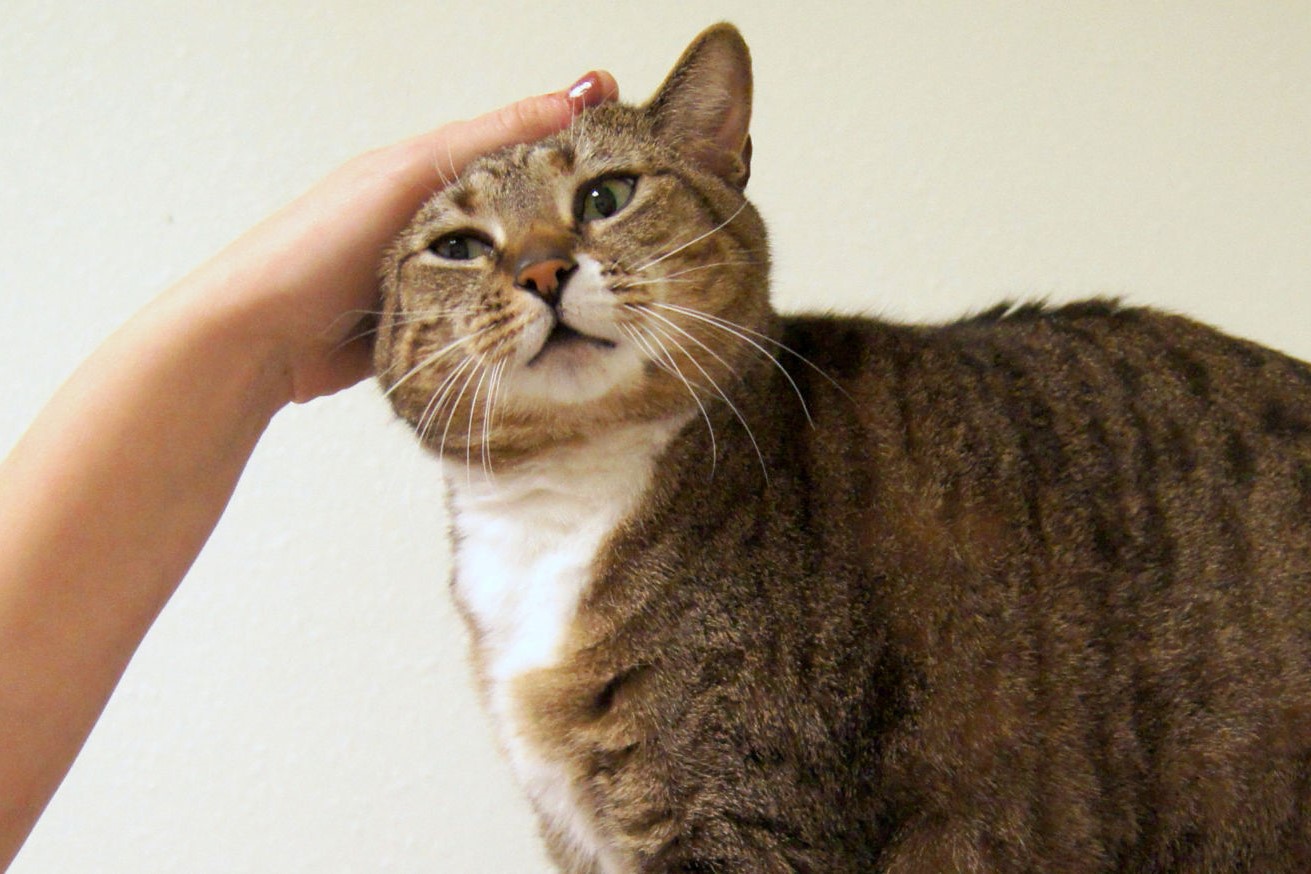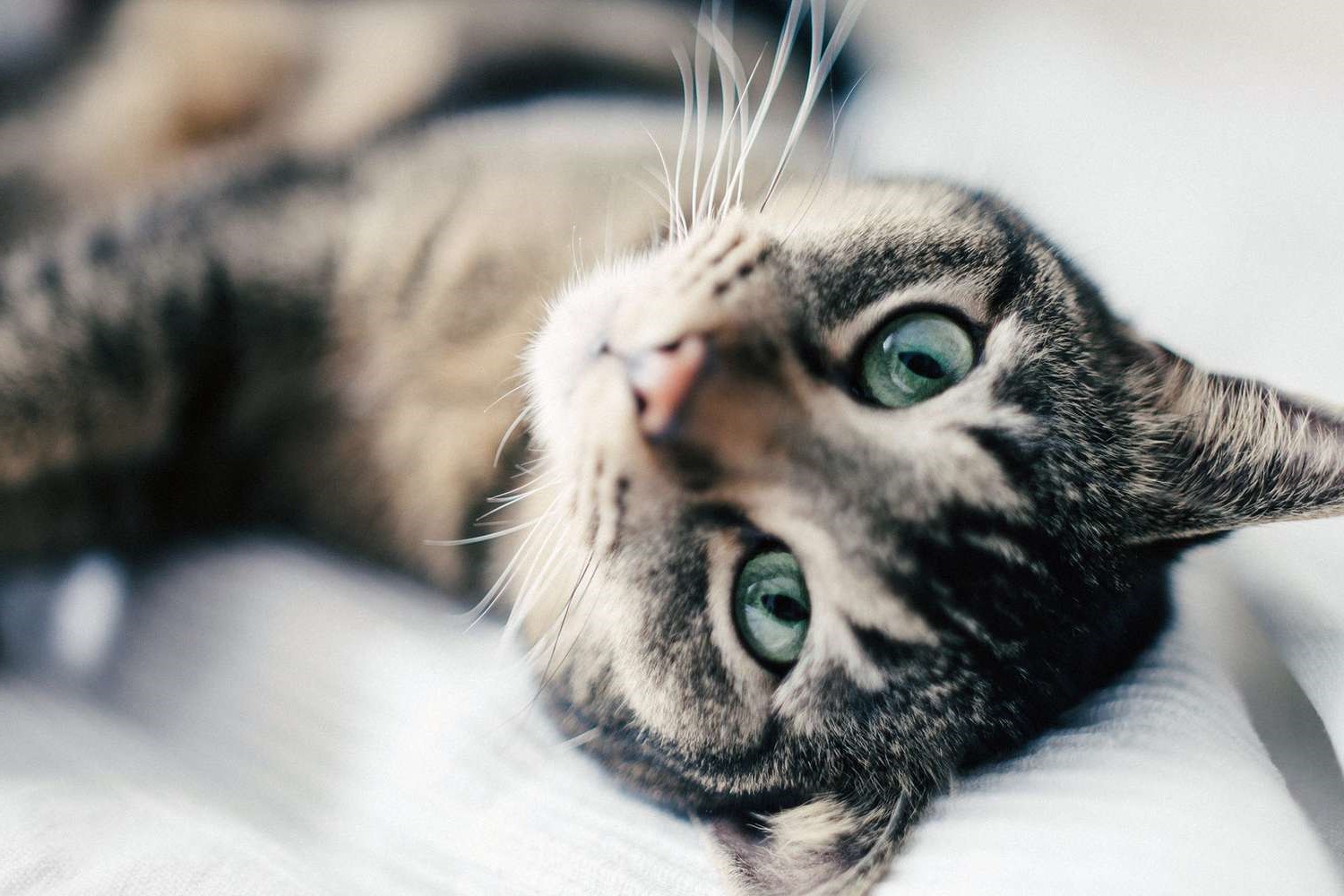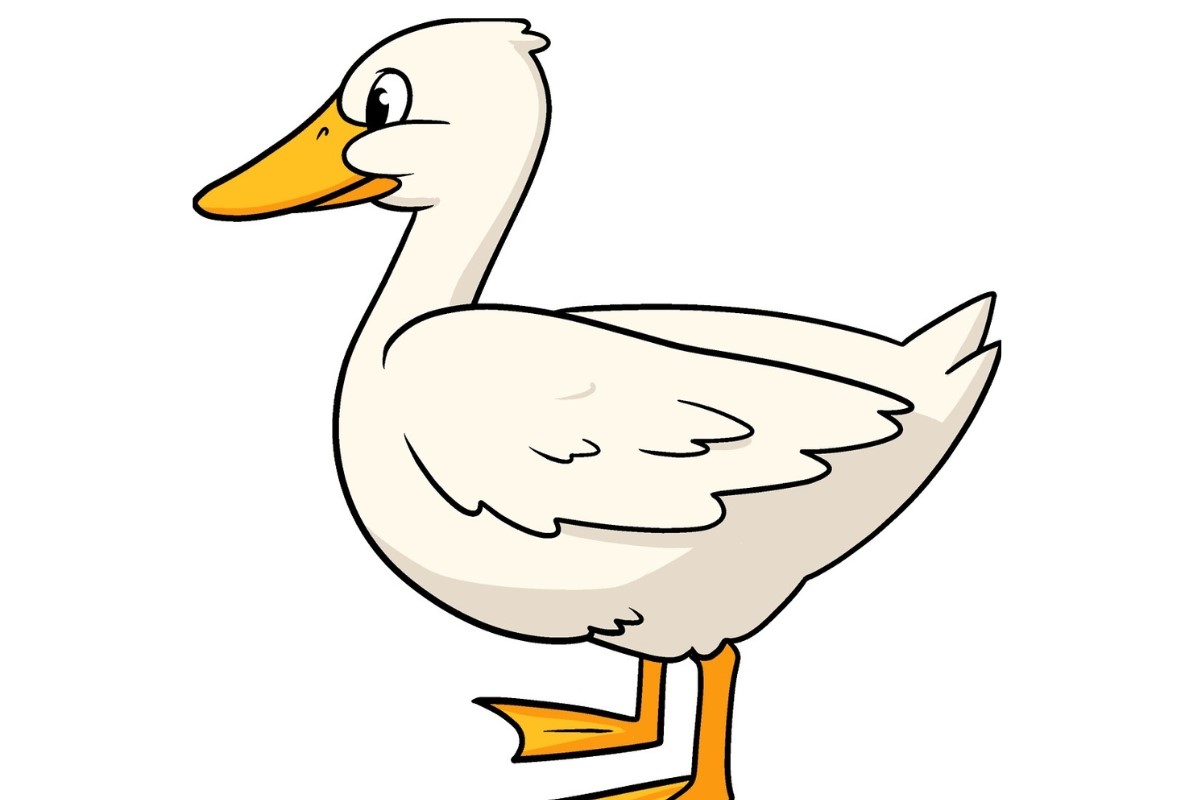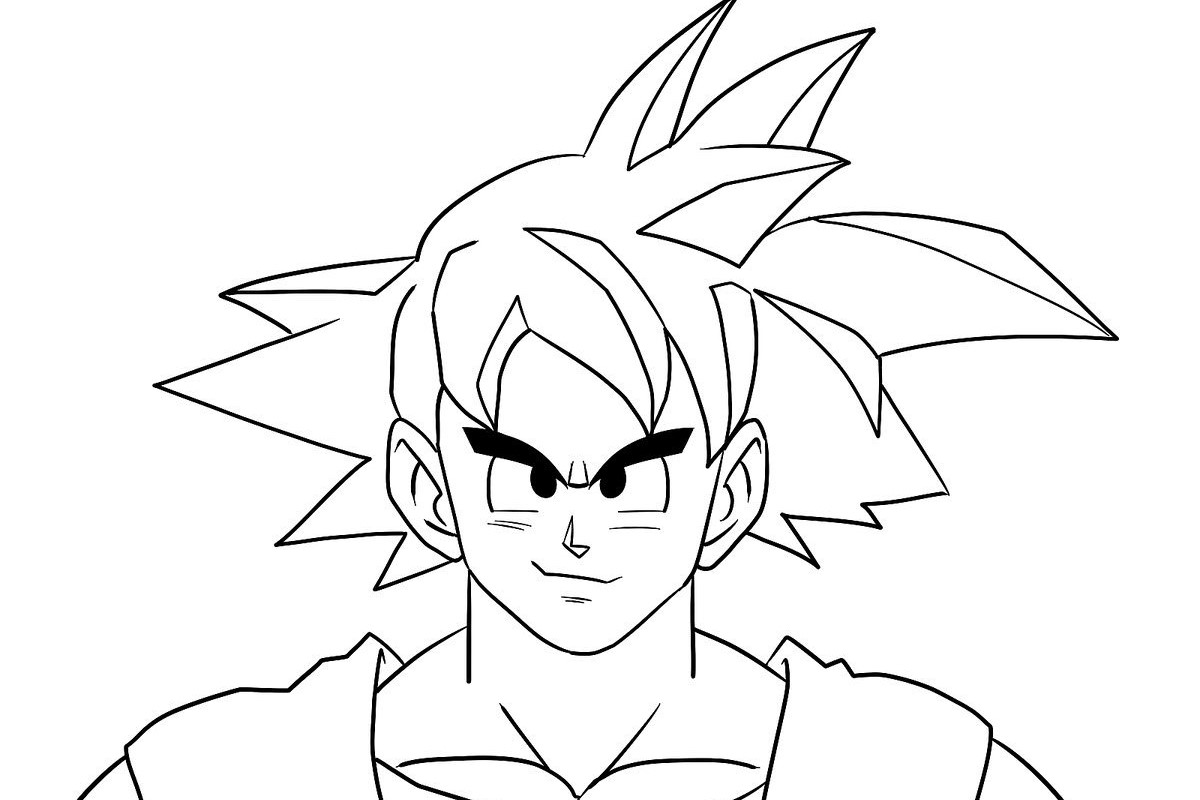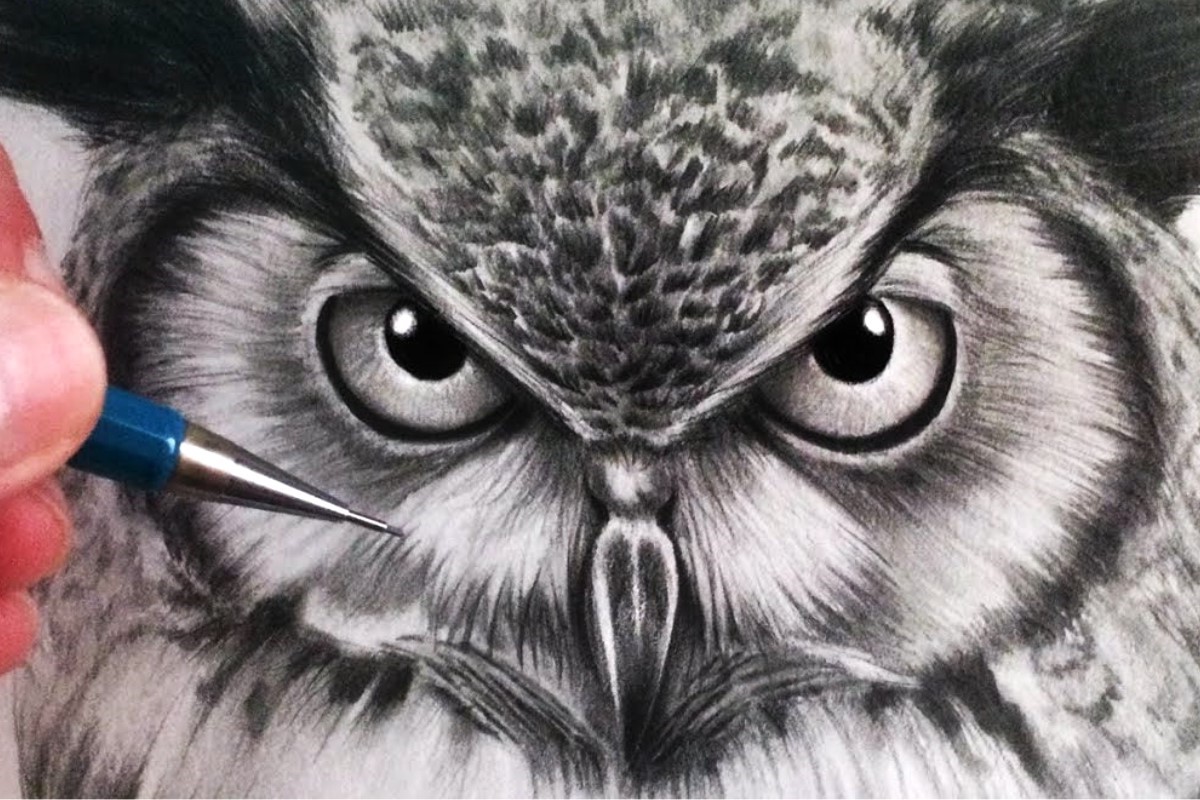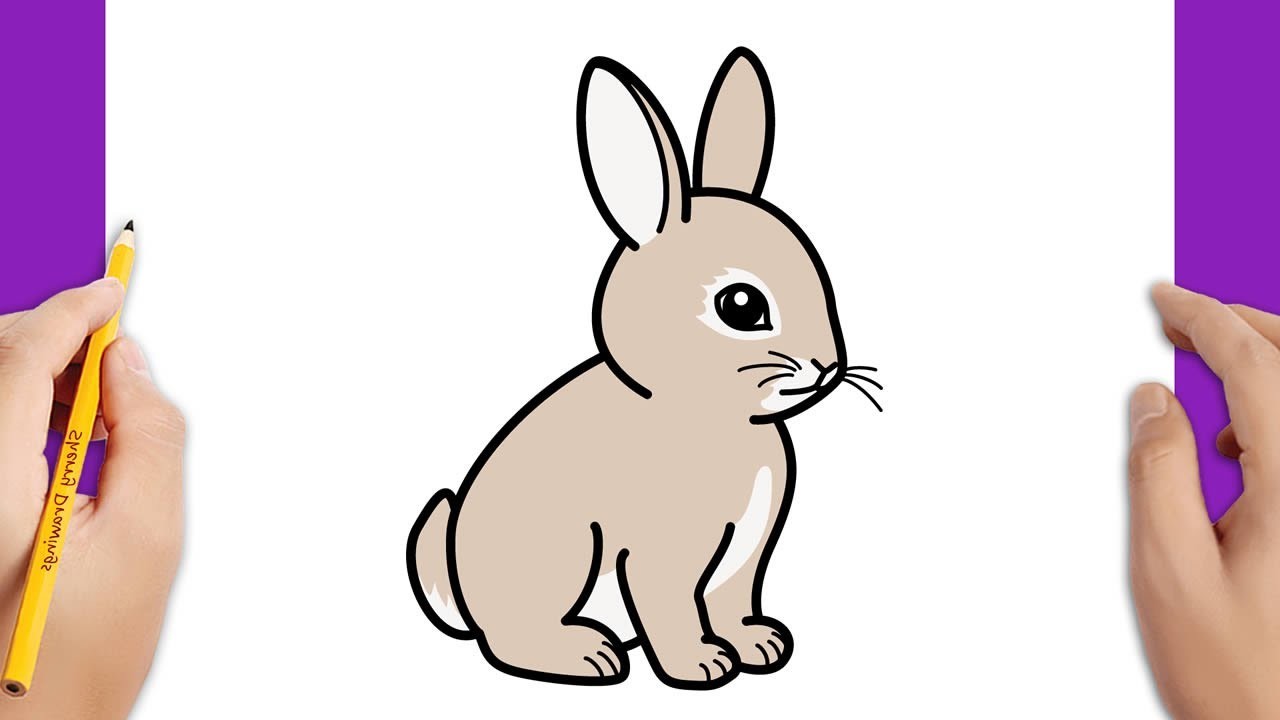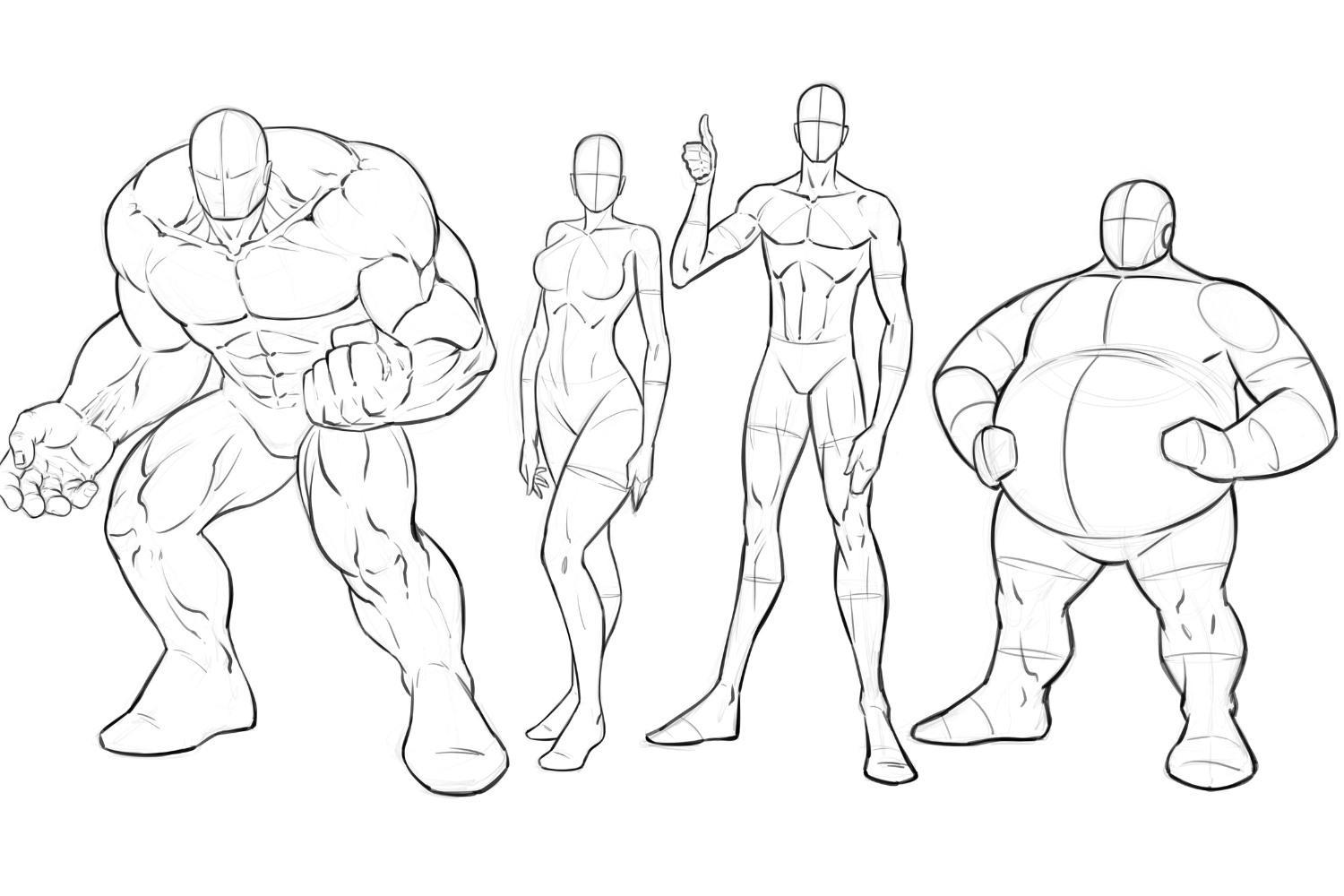Home>Arts and Culture>How To Draw A Cat
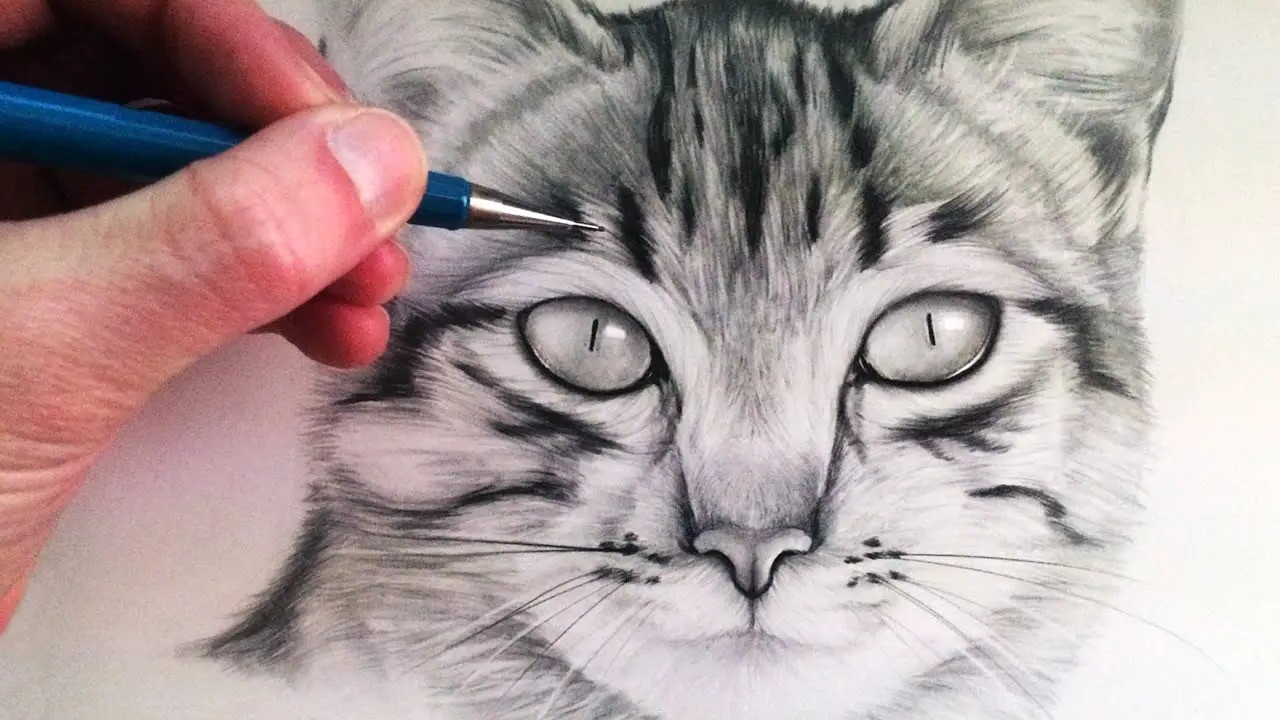

Arts and Culture
How To Draw A Cat
Modified: February 29, 2024
Learn how to draw a cat with step-by-step instructions and unleash your creativity in the world of arts and culture. Master the art of drawing cats today!
(Many of the links in this article redirect to a specific reviewed product. Your purchase of these products through affiliate links helps to generate commission for Noodls.com, at no extra cost. Learn more)
Table of Contents
Introduction
Drawing is a wonderful form of self-expression and creativity that allows you to bring your imagination to life on a blank canvas. Whether you're an aspiring artist or simply looking for a fun and relaxing activity, learning how to draw a cat can be an enjoyable and rewarding experience.
Cats have captivated human hearts for centuries with their grace, agility, and enigmatic charm. As one of the most beloved and popular pets, they hold a special place in many people's lives. Capturing the essence of a cat through art can evoke a sense of warmth and nostalgia, making it a delightful subject for artists of all levels.
In this step-by-step guide, we will explore the process of drawing a cat, from sketching the basic body shape to adding intricate details that bring the feline form to life on paper. Whether you prefer a realistic portrayal or a whimsical interpretation, this tutorial will provide you with the fundamental techniques to create your own unique feline masterpiece.
So, grab your drawing materials, find a comfortable space, and let's embark on this artistic journey together. By the end of this tutorial, you will have the skills and confidence to depict a charming cat with your own personal flair. Let's unleash our creativity and bring a purr-fect feline friend to life on the page!
Read more: How To Draw A Pumpkin
Materials Needed
Before diving into the delightful process of drawing a cat, it's essential to gather the necessary materials that will bring your artistic vision to fruition. Here's a list of items that will aid you in creating a captivating feline portrait:
-
Drawing Paper: Select a smooth, sturdy paper that can withstand pencil and ink without wrinkling or tearing. A medium-weight paper with a slight texture is ideal for sketching and shading.
-
Pencils: Invest in a set of high-quality drawing pencils with varying lead hardness, such as 2H, HB, 2B, 4B, and 6B. These will allow you to achieve a range of line weights and shading effects.
-
Eraser: A soft, kneaded eraser is indispensable for gently lifting graphite and creating highlights. Additionally, a precision eraser pen can be useful for refining small details.
-
Sharpener: Keep a reliable pencil sharpener on hand to maintain a fine point for precise lines and intricate work.
-
Drawing Pens: If you enjoy adding ink outlines or details to your drawings, consider using fine-tipped drawing pens in various thicknesses.
-
Reference Images: While drawing from imagination is a wonderful exercise, having reference images of cats can provide valuable insights into their anatomy, fur patterns, and facial expressions. You can use photographs or illustrations as a point of inspiration.
-
Blending Tools: Soft blending stumps or tortillons are excellent for seamlessly blending graphite and creating smooth transitions between light and shadow.
-
Optional: Colored Pencils or Markers: If you wish to add color to your cat drawing, a set of colored pencils or markers can bring vibrancy and personality to your artwork.
By assembling these materials, you'll be well-equipped to embark on your artistic endeavor and bring a delightful cat illustration to life. With your creative spirit ignited and your tools at the ready, let's proceed to the next steps of sketching the feline form with finesse and flair.
Step 1: Sketching the Body
To begin the artistic journey of drawing a cat, we first focus on capturing the fundamental shape of the feline body. Start by lightly sketching a simple oval or egg-like form to outline the cat's torso. This initial shape serves as the foundation for the cat's posture and overall proportions. Keep the lines faint and fluid, allowing for easy adjustments as you refine the body structure.
Next, extend the oval to form a slightly elongated shape, representing the cat's abdomen and hindquarters. Consider the pose you envision for your cat – whether it's sitting, standing, or in a playful stance – and adjust the shape accordingly to convey the desired posture.
As you progress, add a smaller oval at the front of the larger shape to outline the cat's chest and shoulders. This smaller oval helps establish the placement of the cat's forelegs and contributes to the overall balance of the body. Take a moment to observe the flow and curvature of the lines, ensuring a sense of grace and fluidity in the cat's pose.
With the basic body framework in place, lightly sketch in simple lines to indicate the position of the cat's legs. Consider the angle and positioning of the limbs, keeping in mind the natural flexibility and agility of feline anatomy. Whether the cat is depicted in a relaxed or dynamic stance, these initial lines lay the groundwork for the cat's movement and energy.
As you refine the body sketch, pay attention to the proportions and symmetry of the feline form. Take a step back to assess the overall shape and make any necessary adjustments to achieve a harmonious and lifelike portrayal. Remember, this initial sketch serves as the blueprint for the cat's physical presence, setting the stage for the intricate details that will bring the drawing to life.
By mastering the art of sketching the cat's body, you lay a solid foundation for the subsequent steps of adding depth, character, and charm to your feline creation. With the body structure elegantly captured on paper, you're ready to embark on the next phase of drawing the cat's head and face, infusing the artwork with personality and expression. Let your creative instincts guide you as you move forward in this delightful artistic endeavor.
Step 2: Drawing the Head and Face
With the graceful outline of the cat's body sketched onto the paper, it's time to focus on capturing the captivating essence of the feline through its head and face. The cat's facial features are a key element in conveying its unique personality and charm, making this step a pivotal stage in bringing your artistic creation to life.
Begin by lightly sketching a circular shape to define the cat's head, considering the angle and tilt that best encapsulates the desired expression. Whether it's a gentle tilt denoting curiosity or a proud posture exuding confidence, the positioning of the head sets the tone for the cat's demeanor. Take a moment to observe the subtle curvature of the lines, ensuring a sense of grace and poise in the cat's countenance.
Next, within the circular framework, sketch the basic placement of the cat's eyes, nose, and mouth. The eyes, often considered the windows to the soul, play a pivotal role in capturing the cat's emotive gaze. Whether you opt for almond-shaped eyes that exude a sense of mystery or round eyes brimming with warmth, the choice of eye shape contributes to the cat's overall expression.
Moving on to the nose, delicately sketch a small triangular shape at the center of the circular head outline. The nose serves as a focal point, adding depth and dimension to the cat's facial structure. Consider the angle and size of the nose in relation to the eyes, ensuring a harmonious balance that accentuates the cat's unique features.
As you refine the facial sketch, add the cat's ears with gentle, sweeping lines that capture their distinctive shape and position. Whether the ears are perked up in alertness or relaxed in a tranquil state, their placement and angle convey the cat's mood and disposition. Take care to observe the subtle nuances of feline ear anatomy, infusing your drawing with authenticity and character.
With the basic facial features in place, lightly outline the mouth and whisker pads to complete the cat's visage. The mouth, whether depicted in a gentle curve or a playful smirk, adds a touch of personality to the cat's expression. Meanwhile, the whisker pads contribute to the cat's endearing charm, framing the face with a touch of whimsy and elegance.
By mastering the art of drawing the cat's head and face, you infuse your artwork with a sense of depth and emotion, capturing the essence of the feline spirit. With the body and facial features elegantly portrayed on paper, you're ready to proceed to the next steps of adding intricate details and final touches, bringing your feline creation to full fruition. Let your creative instincts guide you as you continue on this delightful artistic journey, embracing the beauty and allure of drawing a cat with finesse and flair.
Step 3: Adding Details
As we delve into the captivating process of drawing a cat, the art of adding intricate details elevates the feline form from a mere sketch to a captivating portrayal brimming with personality and charm. This pivotal step allows us to infuse our artwork with depth, texture, and nuance, bringing the cat to life on the page with finesse and flair.
To begin, focus on refining the contours of the cat's body, accentuating the graceful curves and subtle musculature that define its form. Pay close attention to the transition between light and shadow, using gentle, controlled strokes to create a sense of volume and dimension. Whether the cat's fur is sleek and glossy or fluffy and ruffled, the careful application of shading and texture adds a tactile quality to the drawing, inviting the viewer to immerse themselves in the feline world.
Moving on to the cat's facial features, devote attention to the eyes, infusing them with a captivating sense of depth and expression. Consider the play of light and shadow within the eyes, capturing the enigmatic gleam that reflects the cat's inner spirit. Whether the gaze exudes a sense of curiosity, wisdom, or playfulness, the eyes serve as a window into the feline soul, inviting the viewer to connect with the essence of the cat's persona.
Furthermore, refine the intricate details of the cat's ears, nose, and whiskers, adding subtle nuances that enhance the drawing's authenticity and charm. Pay homage to the delicate contours of the ears, capturing their elegant shape and positioning with precision and grace. The nose, with its unique texture and form, becomes a focal point that adds a touch of realism and character to the cat's visage. Meanwhile, the whiskers, depicted with finesse and delicacy, impart a sense of whimsy and grace, framing the cat's face with a touch of enchantment.
As you meticulously add details to the cat's body and facial features, allow your artistic intuition to guide you, infusing the drawing with a sense of vitality and allure. Embrace the opportunity to capture the essence of the feline form, celebrating its grace, elegance, and enigmatic charm through the artful application of intricate details.
With the addition of these refined elements, your cat drawing blossoms into a captivating portrayal that resonates with authenticity and emotion, inviting viewers to revel in the timeless allure of feline grace and beauty. As we proceed to the final touches, let your creative spirit soar, embracing the joy of bringing a purr-fect feline friend to life on the page.
Read more: How To Draw People
Step 4: Drawing the Tail and Paws
As we continue our artistic journey of drawing a cat, attention to detail becomes paramount in capturing the essence of feline grace and elegance. In this step, we focus on infusing the cat's form with the subtle intricacies of its tail and paws, adding a touch of dynamism and charm to our artistic portrayal.
The tail, often regarded as a symbol of a cat's expressive nature, serves as a captivating feature that conveys a range of emotions and movements. Begin by lightly sketching the basic shape of the tail, considering the cat's posture and mood to determine its curvature and length. Whether depicted in a graceful arc or a playful curl, the tail becomes a visual storyteller, hinting at the cat's inner thoughts and intentions. Pay attention to the tapering of the tail, delicately refining its contours to evoke a sense of fluidity and motion. As you add subtle shading and texture, consider the interplay of light and shadow to imbue the tail with a tactile quality, inviting the viewer to appreciate its graceful form.
Moving on to the paws, these intricate appendages contribute to the cat's poise and agility, serving as a testament to its innate grace and dexterity. Begin by sketching the basic outlines of the paws, carefully observing their placement in relation to the body and the subtle curvature of the toes. Whether the cat's paws are depicted in a relaxed posture or engaged in playful activity, capture the gentle contours and subtle details that define their form. Pay homage to the delicate pads and claws, infusing them with a sense of realism and charm. As you refine the paws with nuanced shading and texture, consider the interplay of light and shadow that accentuates their elegant structure, adding depth and dimension to the cat's portrayal.
By skillfully rendering the tail and paws, you infuse your cat drawing with a sense of movement and vitality, celebrating the feline form in all its grace and allure. With these refined elements elegantly captured on paper, your artistic creation blossoms into a captivating portrayal that resonates with authenticity and emotion, inviting viewers to revel in the timeless allure of feline grace and beauty. As we proceed to the final touches, let your creative spirit soar, embracing the joy of bringing a purr-fect feline friend to life on the page.
Step 5: Final Touches
As we approach the culmination of our artistic endeavor, the final touches serve as the crowning moments that elevate our cat drawing from a mere illustration to a captivating portrayal brimming with life and personality. This pivotal stage allows us to infuse our artwork with a sense of depth, emotion, and authenticity, inviting viewers to immerse themselves in the timeless allure of feline grace and beauty.
With the foundational elements of the cat's body, head, and intricate details elegantly captured on paper, the final touches offer an opportunity to refine and enhance the drawing, ensuring that every stroke and shading contributes to the overall harmony and resonance of the artwork. Embrace the delicate art of observation, allowing your keen eye to discern the subtle nuances of light and shadow that define the cat's form. Whether it's a gentle play of sunlight on the fur or the enigmatic gleam in the cat's eyes, these nuanced details add a layer of realism and allure to the drawing, inviting viewers to connect with the feline spirit on a profound level.
Devote attention to the interplay of textures, from the sleek sheen of the cat's coat to the delicate softness of its whiskers, infusing the drawing with a tactile quality that beckons the viewer to reach out and touch the feline form. Consider the graceful flow of lines and contours, ensuring a sense of fluidity and elegance that captures the essence of feline grace and poise. With each refined stroke, allow your artistic intuition to guide you, infusing the drawing with a sense of vitality and charm that transcends the boundaries of mere representation.
Furthermore, consider the use of negative space to accentuate the cat's presence, allowing the surrounding emptiness to enhance the cat's form and imbue the drawing with a sense of balance and harmony. Whether it's a subtle suggestion of the cat's environment or a minimalist backdrop that directs the viewer's focus to the feline subject, the strategic use of negative space adds a layer of depth and sophistication to the artwork, inviting contemplation and appreciation.
As you add the final touches to your cat drawing, embrace the joy of bringing a purr-fect feline friend to life on the page, celebrating the timeless allure of feline grace and beauty. With finesse and flair, allow your creative spirit to soar, infusing the drawing with a sense of vitality and charm that resonates with authenticity and emotion. As the finishing strokes grace the paper, revel in the artful creation that captures the essence of the feline spirit, inviting viewers to revel in the timeless allure of feline grace and beauty.
Conclusion
In the delightful journey of drawing a cat, we have embarked on a creative exploration that celebrates the timeless allure of feline grace and beauty. From the initial sketching of the cat's body to the intricate details that bring its form to life, each step has been a testament to the artistry and charm of capturing the essence of our feline friends on paper.
As we conclude this artistic endeavor, it's essential to reflect on the profound connection that drawing a cat fosters between the artist and the subject. Through the careful observation of feline anatomy, the playful interplay of light and shadow, and the artful application of intricate details, we have not only created a captivating portrayal of a cat but also forged a deeper appreciation for the elegance and enigmatic charm of these beloved creatures.
Drawing a cat transcends the mere act of representation; it becomes a celebration of the feline spirit, inviting us to revel in the grace, agility, and expressive nature of our feline companions. The final touches added to the drawing serve as a testament to the artist's keen eye and unwavering dedication to capturing the essence of the cat, infusing the artwork with a sense of vitality and allure that resonates with authenticity and emotion.
As we gaze upon the completed drawing, we are reminded of the profound bond that exists between humans and cats, a bond that transcends language and culture, evoking feelings of warmth, nostalgia, and companionship. Whether depicted in a realistic portrayal or a whimsical interpretation, the cat drawing becomes a testament to the enduring presence of these enigmatic creatures in our lives, inviting us to celebrate their beauty and grace through the timeless art of illustration.
In the act of drawing a cat, we not only hone our artistic skills but also cultivate a deeper understanding of the intricate nuances that define the feline form. We embrace the joy of bringing a purr-fect feline friend to life on the page, celebrating the timeless allure of feline grace and beauty with finesse and flair. As we bid adieu to this artistic journey, let the spirit of the cat continue to inspire and captivate us, reminding us of the enduring magic and charm that they bring into our lives.







